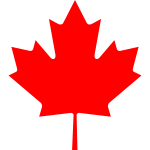Kinds Of Grass
Discover kinds of grass. In any ecosystem there exist quite a number of grasses some of which are not known to the ordinary person. Grass plays very important roles in the environment such as soil conservation by preventing soil erosion, landscaping, serves as hey amongst other very important functions.
Grass can be described as glossy, green, blue-green, thick or short-fine. Some of the most common examples of grass include:
The ryegrass is vastly known to last for only a year and thus relatively cheap kinds of grass. For this simple reason, they are referred to as the annual grass. This grass can do well in both shaded and sunny areas. It appears to be wide and glossy due to its evergreen fine blades. They are mostly used on playgrounds or at times in backyards.
The ryegrass must be well taken care of to survive however; there are those types of grass which do not need much care though they can do relatively well. Examples are the buffalograss which are known for very low maintenance cost of all the existing types of grass. They are preferred for lawns. This is one of the naturally existing indigenous kinds of grass which is majorly found in
North America.
Another grass found in North America is the Kentucky grass. They are uniquely known for their blue-green colors which are very fine in texture. Unlike the ryegrass, these kinds of grass can last longer on lawns as long as they are properly maintained.
The creeping bentgrass is also popular for its evergreen nature and exists in either the creeping form or the colonial form. The two forms in which these kinds of grass exist depends on the average height each can achieve. The colonial ones are normally kept at a height of more 0.25 inches while the creeping one does not grow past a height of 0.25 inches.
The Bermuda grass is known for desert ecosystem. These kinds of grass have tap roots which grow deep into the soil top enable them get sufficient moisture from the soil. Although it’s able to maintain its green hue, when the weather conditions worsen, it normally turns to be brown or yellow. Conditions suitable for its growth are high temperatures of about fifty degrees with no excessive shade. In most instances, when conditions do not favor its growth, it will always opt to be dormant.
Centipede kinds of grass are not like the Bermuda grass which is adapted to desert ecosystem. Their requirements for optimal growth are completely opposite to those found in deserts. One of the main reasons why it can’t thrive in deserts is its short fibrous roots which lie just above the soil surface. It can’t grow either in salty environments or excess shade and sunlight. It’s normally preferred for low traffic regions. This may at times make the centipede to be one of the most expensive grasses to maintain especially if not grown in appropriate environments.
The last kinds of grass in this list is the zoysia which is known to do well in heavy traffic, has very fine blades, comes with low maintenance costs besides having adaptive features like the Bermuda grass.
Before opting for any of the many grass, ensure that all the conditions necessary for growth are met. These conditions include, water, shade, soil conditions etc. Besides these, the ability to withstand other factors such as wear and tear is also necessary to ensure the grass lasts longer in your lawn.






